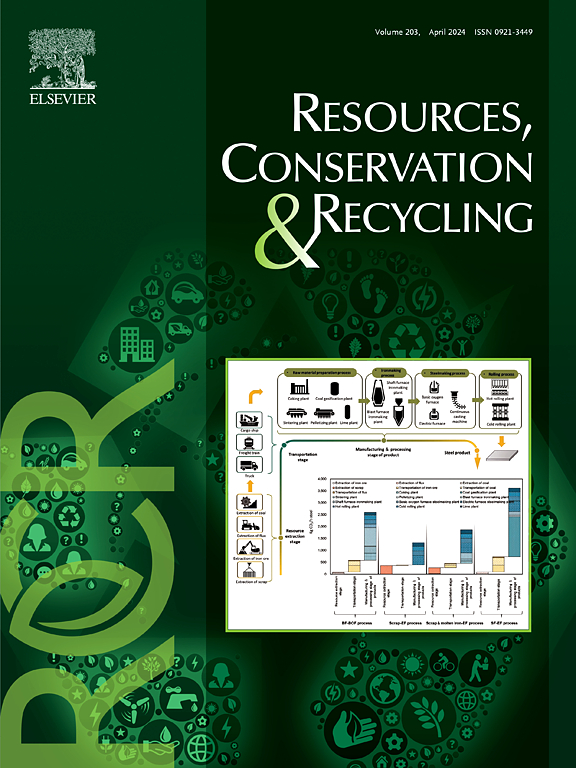Methodology for identifying cost-effective food waste-resource circulatory strategies toward zero-carbon cities: Linking valorization technologies with byproduct reutilization pathways
IF 11.2
1区 环境科学与生态学
Q1 ENGINEERING, ENVIRONMENTAL
引用次数: 0
Abstract
Many cities seek to understand the intersection between food waste (FW) resource circularity and urban zero-carbon goals. However, currently available FW analytic tools focus only on FW valorization technologies in the current energy system, and do not analyze various byproducts reutilization pathways towards urban decarbonization. Our paper contributes by combing: a) Life cycle assessment of six advanced carbon valorization technologies in a future zero-carbon grid, with: b) Cost-effectiveness analysis of alternative byproducts reutilization pathways that contribute to urban decarbonization, including heating transitions through biogas reutilization in residential furnaces, neighborhood-scale district energy systems (DES), and regional-scale power generation to support heat pumps, as well as transportation fuel transitions and farm-application of digestate and biochar. Among six advanced technologies (beyond composting), anaerobic digestion (AD) with and without biochar amendment delivered maximum carbon mitigation (∼230–270 kg CO2-eq/tonne FW), while AD-only has the most energy savings (∼24 therms/tonne FW). Among reutilization pathways, direct use of biogas in existing neighborhood DES yielded the lowest decarbonization cost-effectiveness (-$1000/tonne CO2-eq), much lower and cost saving than the next option of biomethane as transportation fuel ($40/tonne CO2-eq). The methodology, applied to a cold climate city of St Paul, MN, can be generalized elsewhere and to different resources/byproducts, quantifying for the first time cost-effectiveness of the combined valorization-reutilization resource circularity cycle toward urban decarbonization.

求助全文
约1分钟内获得全文
求助全文
来源期刊

Resources Conservation and Recycling
环境科学-工程:环境
CiteScore
22.90
自引率
6.10%
发文量
625
审稿时长
23 days
期刊介绍:
The journal Resources, Conservation & Recycling welcomes contributions from research, which consider sustainable management and conservation of resources. The journal prioritizes understanding the transformation processes crucial for transitioning toward more sustainable production and consumption systems. It highlights technological, economic, institutional, and policy aspects related to specific resource management practices such as conservation, recycling, and resource substitution, as well as broader strategies like improving resource productivity and restructuring production and consumption patterns.
Contributions may address regional, national, or international scales and can range from individual resources or technologies to entire sectors or systems. Authors are encouraged to explore scientific and methodological issues alongside practical, environmental, and economic implications. However, manuscripts focusing solely on laboratory experiments without discussing their broader implications will not be considered for publication in the journal.
 求助内容:
求助内容: 应助结果提醒方式:
应助结果提醒方式:


